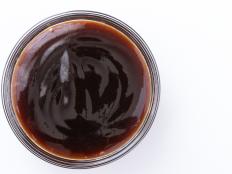How to Cook Chinese-Style Hot Pot at Home
Many cities have hot pot restaurants, but it’s cheaper to make hot pot home—and easier to prep than you think.

Matt Armendariz
Let’s talk about a meal that’s perfect for celebrations and gatherings where everyone wants to be part of the cooking—and eating! Picture this: Enticing, aromatic steam rises off a bubbling pot of broth in the center of the table, or in a more modern set-up, from an individual pot in front of you. Guests gather 'round, eager to cook a bountiful spread of raw ingredients right in the piping hot broth. You choose your favorite bites to dip or try something new, sharing in the communal experience with your friends. It’s Chinese-style hot pot (Japanese-style shabu shabu is similar), and it’s one of the most fun and satisfying ways I can think of to feed a crowd.
I can remember my parents preparing hot pot when I was young. They would wash and cut all the vegetables while the broth bubbled away. Then, they would cook a bunch of ingredients and fill a bowl for me to drizzle with my dipping sauce. I would always scarf it down. Nowadays, I make my own version of hot pot for my family and friends. Many cities have hot pot restaurants, but it’s cheaper to make at home, and easier to prep than you think.
With its many ingredient options, hot pot can seem overwhelming, but it’s actually is pretty straightforward. You cook razor-thin cuts of meat, vegetables and more right at the table. That minimizes both cooking time and the distance from cooktop to plate, so it's a fun, interactive eating experience. You can customize how you cook the raw ingredients, and can also change up the dipping sauce to your liking. Here’s how I like to do it.

Matt Armendariz
How to Cook Hot Pot: A Step-by-Step Guide
Gather Your Tools
While you can certainly cook and serve the hot pot broth right from your stove (you'd cook a larger bowl of meat in the broth and bring it to the table), it’s more fun (and functional) to serve the broth right in the middle of the table, kept simmering on a portable butane or induction burner.
You can use any shallow pot for the broth (make sure it’s induction-compatible if you have an induction burner), but it’s nice to have a special pot with a divider, so that you can infuse half the broth with spicy flavors for those who like extra heat — my recipe calls for adding chili oil to half the broth.
These small strainers are my favorite for easily scooping delicate ingredients (like fish fillet or fish tofu) out of the broth, but you can also use a small ladle like these.
For each person, you’ll also need two sets of wooden chopsticks (everyone needs one set for handling raw ingredients, and one for handling cooked ingredients to prevent cross-contamination), a personal bowl to hold your cooked ingredients and a small dipping sauce bowl for each person.
Here's What to Buy

Matt Armendariz
Shop for Ingredients
Once the hardware is sorted out, head to the grocery store. Most Asian grocery stores will have everything you need. First the proteins: thinly sliced beef, lamb, pork, chicken and white fish fillet; shellfish (mussels, clams, lobster, crab, crawfish) and octopus or squid. Fish balls and fish tofu are also popular choices. You can find thinly sliced meats in the frozen section near the butcher, and fish fillet in the frozen aisle or at the defrosted display.
You can also get Napa cabbage, enoki mushrooms, Yukon gold potatoes, daikon, corn cobs, kabocha squash, fresh udon or ramen noodles, plus all the Asian condiments and seasonings – like Chinese BBQ sauce (I like Bullhead brand), chili oil, chili crisp and much more (see below for all the items you can mix into a dipping sauce).
If you’re shopping at a Western-style grocery store, you can find cabbages, spinach, mushrooms, and some condiments (soy sauce, hoisin sauce, oyster sauce and sesame oil are widely available), and you can ask your butcher to thinly slice any fatty cuts or lean cuts of meat for you — I recommend getting a fatty cut of beef, such as brisket or ribeye. Chicken thighs cut into bite-size pieces, thinly sliced pork loin or thinly sliced chicken breast are nice options too.
A good rule of thumb is to have 1/2 pound of protein per person, 1 bunch or 1/2 pound of each vegetable and 1 pack of your favorite brand of fish balls (my favorite is brand Ri Wang; they're very bouncy and not too greasy). I tend to buy more meats since all my guests tend to be meat eaters, but hot pot can be comprised totally of seafood or you can make it vegetarian-friendly (just exclude Chinese BBQ Sauce since it contains seafood and choose a mushroom broth recipe instead).

Matt Armendariz
Prep for Success
Hot pot can come together in a flash because the bulk of your prep time is washing, trimming, and cutting all the vegetables into bite-size pieces. You'll also want to peel potatoes, cut tough mushroom stems and remove squash seeds. Next, remove everything else from its packaging and arrange on platters, keeping proteins frozen until you’re ready to serve. I also cut the fish fillet into small 1-inch chunks and marinade it in a light seasoning of 1/4 teaspoon salt, 1/4 teaspoon white sugar, 1/2 teaspoon cornstarch and 1 teaspoon neutral oil to improve the texture of the fish when it’s cooked.
You can make a homemade broth, but to make it even easier, Asian grocery stores sell hot-pot bases; all you need to do add water. But I like to make my own broth. That way, you can control the ingredients and how much salt is in it.
Homemade Hot Pot Broth
Our recipe is very simple, which lets the flavor of the proteins and vegetables shine, but kimchi, tomatoes, and chile peppers are just some of the possible additions.

Matt Armendariz
Mix Your Dipping Sauce
Round out the spread with a customizable dipping sauce station. Everyone can begin to create their bowl by mixing condiments and seasonings like Chinese BBQ sauce, soy sauce, oyster sauce, hoisin sauce, sesame oil, sesame paste or "dressing" (roasted sesame paste), peanut butter, chili oil, chili crisp, salt, white sugar, chopped garlic, chopped ginger, chopped scallions, and cilantro leaves. (It looks like a lot of condiments and sauces to buy, but when the gathering is over, your pantry will be completely replenished with whatever condiments are leftover!) The options should cover everyone’s personal preference — whether they want salty-nutty, sweet-nutty, sweet-salty, salty-spicy, or sweet-spicy sauces. The sky’s the limit when it comes to combinations. It can be as simple as just combining soy sauce and sesame oil, but it’s fun to experiment and play with the ingredients to see what you like. My favorite dipping sauce is a combination of savory and nutty flavors to complement the rich and milky broth — get the recipe here.

Matt Armendariz
Cook and Serve
Once your guests have mixed their dipping sauces, fire up the stove, bring the broth to a rolling boil and have people add items to the pot, little by little — you’ll be cooking and eating as the meal goes on. I usually add the items that take the longest to cook into the pot first — like Napa cabbage, watercress, fish tofu and eggs in their shells.
Take the meat out of the freezer about five to ten minutes before you eat to help separate the pieces. Dip each piece into the bubbling broth until the meat is no longer pink, being careful not to overcook. As your meat, veggies and other ingredients are finished cooking, dip them in your dipping sauce and enjoy hot! As the ingredients get eaten, keep the food coming by replenishing the platters throughout the meal.

Matt Armendariz
Eat Every Last Bit!
Once you’ve eaten most of meats and vegetables, everyone can finish off the last bowl by making a noodle soup — cooking udon or ramen noodles in the broth, cook a few more meats and vegetables to top it off, and ladle the sweet and savory broth into your bowl. Drizzle some dipping sauce over and mix to coat everything in the sauce. Now you’ve made a noodle soup, and can enjoy how all the flavors have melded together!
At the end of the meal, there will most likely be some vegetables and other ingredients left over. You might even have leftover broth. I tend to chop the everything for use in a fried rice, a stir-fry with udon noodles or more noodle soup for another time.
Once you have the basics down, it’s easy to adjust the experience to your taste, or try something new every time. That’s what’s so amazing about hot pot!
Related Links:





































































